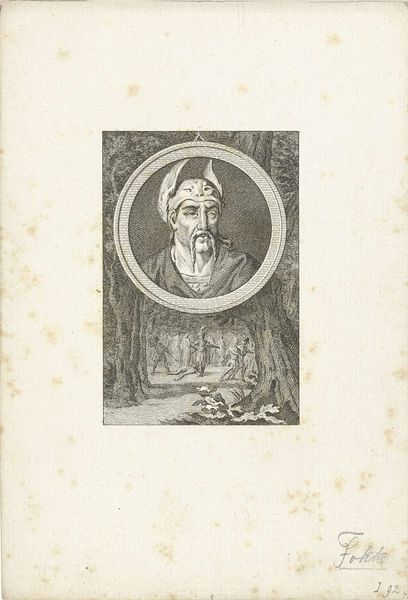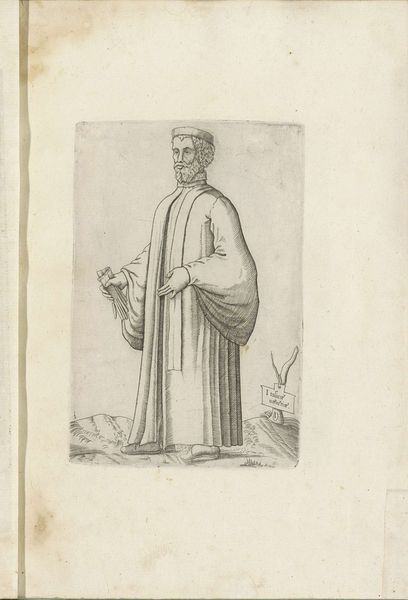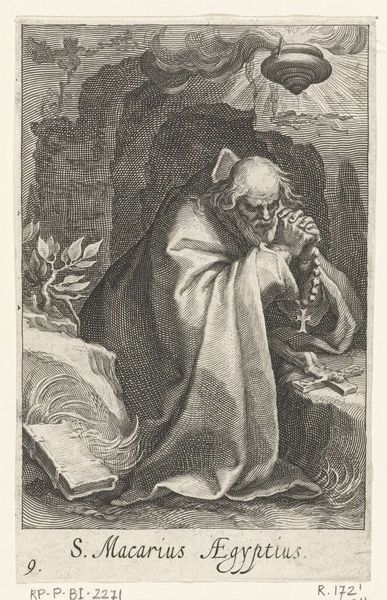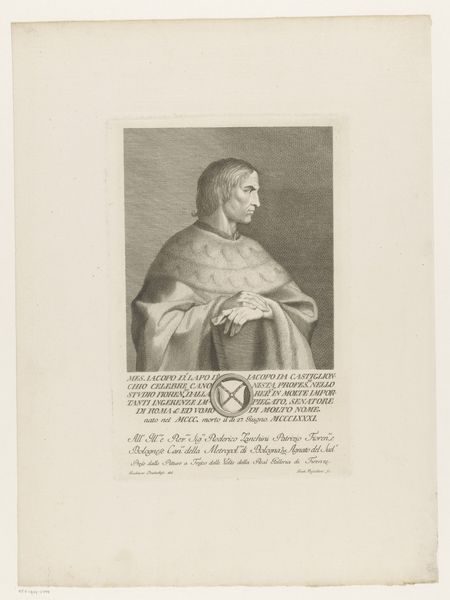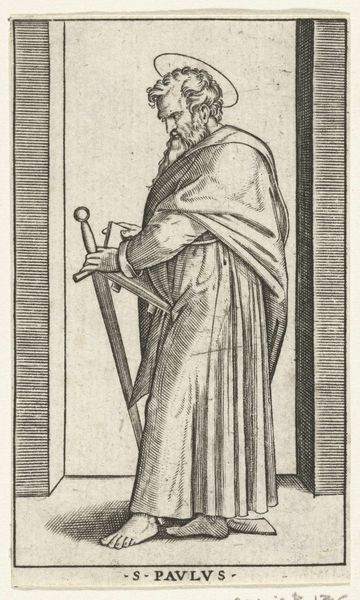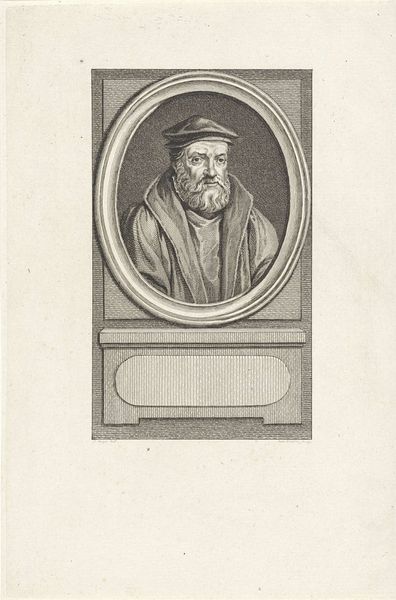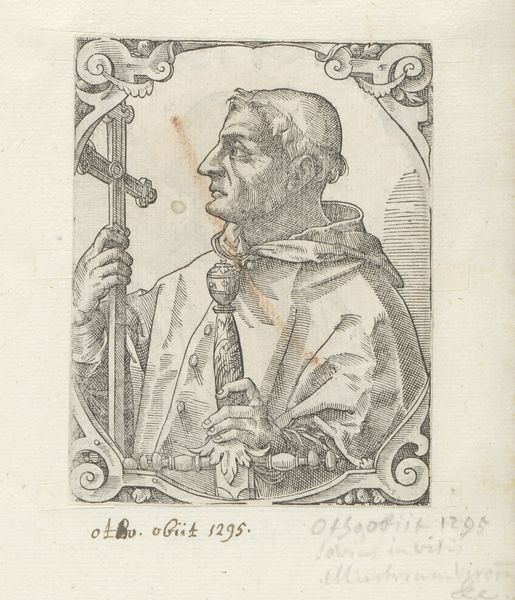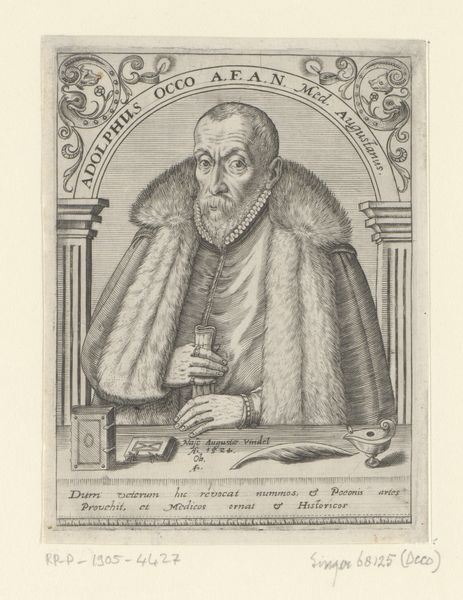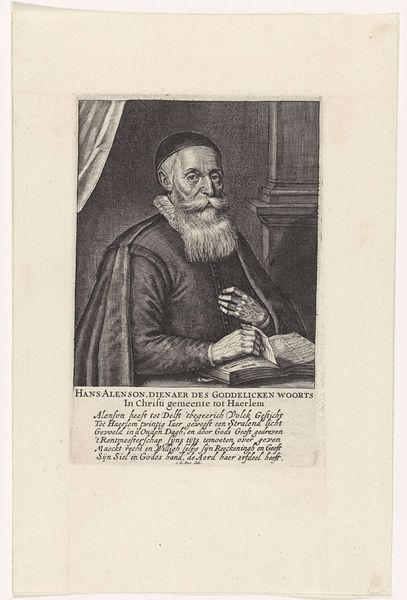
print, etching, engraving
#
portrait
# print
#
etching
#
old engraving style
#
personal sketchbook
#
genre-painting
#
history-painting
#
engraving
#
realism
Dimensions: height 252 mm, width 176 mm
Copyright: Rijks Museum: Open Domain
Curator: Looking at this print, titled "Monnik wijzend op een boek," possibly created in 1868 by Leo Paulus Johannes Stracké, what are your initial thoughts? Editor: There's something about the texture, achieved through etching and engraving, that immediately catches my eye. The lines create a wonderful play of light and shadow across the monk’s face and clothing, but there is an old feeling evoked by the "old engraving style" Curator: I agree. Let’s consider Stracké's process a bit further. The fine lines are very detailed; this suggests skilled craftsmanship and the availability of specialized tools and materials within the artistic milieu of the time. But beyond the craft, do you think this says anything about the place of production and consumption in that time? Editor: Absolutely. Prints like these, circulated widely. Consider its role in disseminating knowledge and shaping public perception of historical figures, like this Monk pointing at the open book. These printed images functioned as visual arguments within broader socio-political contexts of 19th century. Curator: Interesting. Also, note the bare frame surrounding the monk's figure; it contrasts the empty space beneath, reserved to be filled with words. Editor: Yes, the inscription space turns this from a simple portrait into something that hints towards narrative. This becomes particularly intriguing considering that, at the time, academic historical painting sought to make historical narratives accessible to wider audiences. Did these engravings reach different strata of society in other countries? Curator: Undoubtedly, distribution channels are an essential point, even today. The availability of printmaking workshops and networks of art dealers would have been pivotal to Stracké's reach. The raw materials needed were also accessible... the social context clearly enabled the possibility of this. Editor: Seeing art like this truly highlights the power of images in public discourse. Considering how prints contributed to the spread of ideas makes me wonder about the other themes and messages present. Thank you! Curator: A valid reflection indeed. Looking closer to materials and production has allowed for different, engaging ways of seeing!
Comments
No comments
Be the first to comment and join the conversation on the ultimate creative platform.

